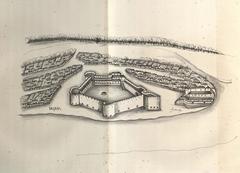Comprehensive Guide to Visiting Palipada, Vasai-Virar, India
Date: 18/07/2024
Introduction
Palipada, nestled in the vibrant Vasai-Virar region of Maharashtra, India, offers a captivating blend of history, culture, and natural beauty that beckons travelers from all walks of life. This guide aims to provide an in-depth look at Palipada’s historical significance, cultural diversity, and practical visitor information to ensure a fulfilling travel experience.
Palipada’s historical roots trace back to ancient times when it was part of the prominent kingdom of Aparanta. Over the centuries, it has been shaped by various rulers, including the Silhara dynasty, Portuguese colonizers, and the Marathas. Each era has left its mark, creating a rich tapestry of architectural marvels, religious sites, and cultural traditions (Archaeological Survey of India).
Culturally, Palipada is a melting pot of traditions, with indigenous Aagri and Koli tribes preserving their unique customs alongside influences from Portuguese and British rule. Festivals, local cuisine, and religious landmarks like the Vajreshwari Temple and St. Thomas Church offer a glimpse into the area’s diverse heritage (Maharashtra Tourism).
For visitors, Palipada provides a range of attractions, from historical forts and serene beaches to wildlife sanctuaries. Practical information on visiting hours, ticket prices, and local transport options are covered to help plan your trip efficiently. Whether you’re a history buff, cultural explorer, or nature enthusiast, Palipada promises an enriching experience that combines the old with the new.
Table of Contents
- Introduction
- History of Palipada
- Cultural Significance
- Archaeological Discoveries
- Visitor Information
- Nearby Attractions
- Special Events and Guided Tours
- Photographic Spots
- Accessibility
- Conclusion
- FAQ
History of Palipada
Ancient and Medieval Periods
Palipada has a rich historical tapestry that dates back to ancient times. Originally part of the ancient kingdom of Aparanta, it was known for its strategic location and fertile lands. During the medieval period, the region came under the rule of the Silhara dynasty, which governed the Konkan coast from the 9th to the 13th century. The Silharas contributed significantly to art and architecture, leaving behind several temples and inscriptions.
Portuguese Era
The arrival of the Portuguese in the early 16th century marked a significant turning point. In 1534, the Portuguese captured the region and established control over Vasai, then known as Bassein. They built several forts, churches, and other structures, including the notable Fort of Bassein, which served as their headquarters.
Maratha and British Periods
In the mid-18th century, the Marathas, under Chimaji Appa, captured Vasai from the Portuguese in the Battle of Vasai in 1739. The British East India Company took over in the early 19th century after defeating the Marathas. Under British rule, the region saw the development of infrastructure such as railways and educational institutions.
Post-Independence Era
After India gained independence in 1947, Palipada became part of Maharashtra. The region has since undergone significant urbanization and development. The establishment of the Vasai-Virar Municipal Corporation in 2009 aimed at improving infrastructure and public services.
Cultural Significance
Palipada is home to several ancient temples, churches, and other religious structures reflecting its diverse cultural influences. The Vajreshwari Temple, dedicated to the goddess Vajreshwari, is a prominent religious site. Annual festivals and fairs provide a glimpse into traditional customs, music, dance, and cuisine.
Archaeological Discoveries
Several archaeological excavations have unearthed artifacts such as pottery, coins, and inscriptions, shedding light on the trade, economy, and daily life of the past.
Visitor Information
Visiting Hours
Most historical sites in Palipada, including the Vasai Fort, are open daily from 9 AM to 5 PM.
Ticket Prices
Entry to most sites is free, but some may have a nominal fee for guided tours.
Travel Tips
- Best time to visit: October to March
- Local transport: Auto-rickshaws and taxis are readily available
Nearby Attractions
- Vasai Beach: A serene beach perfect for relaxation and water sports.
- Tungareshwar National Park: Ideal for nature lovers and wildlife photographers.
- Arnala Fort: A historical fort with panoramic views.
Special Events and Guided Tours
Guided tours are available for most major attractions. The Vasai-Virar Municipal Corporation also organizes heritage walks and cultural festivals.
Photographic Spots
- Vasai Fort: Massive walls and bastions
- Vajreshwari Temple: Intricate architecture
- Vasai Beach: Scenic views
Accessibility
Most major sites are accessible by road, and local transport is widely available.
Conclusion
Palipada’s rich cultural heritage and historical significance make it a must-visit destination. Whether you’re a history buff or a casual tourist, there’s something for everyone. Don’t forget to download the Audiala app for more updates and follow us on social media!
FAQ
Q - What are the visiting hours for Vasai Fort? A - Vasai Fort is open daily from 9 AM to 5 PM.
Q - Is there an entry fee for Vajreshwari Temple? A - No, entry is free.
Q - What is the best time to visit Palipada? A - The best time to visit is from October to March.
Q - Are guided tours available? A - Yes, guided tours are available for most major attractions.
References
- Archaeological Survey of India. https://asi.nic.in
- Maharashtra Tourism. https://www.maharashtratourism.gov.in
- Vasai-Virar Municipal Corporation. https://vvcmc.in

